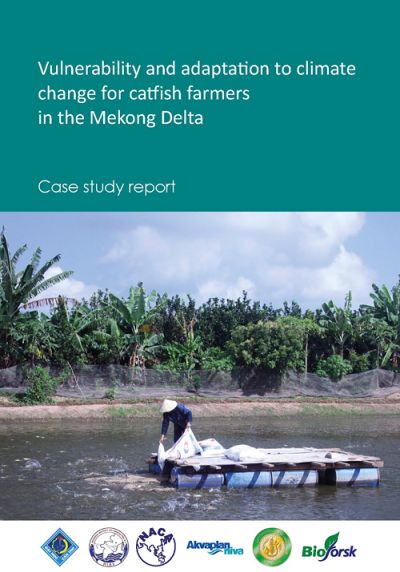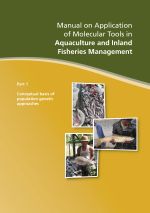Case study: Vulnerability and adaptation to climate change for catfish farmers in the Mekong Delta
4 October 2012 | 1008 Downloads | .pdf | 1.56 MB | Climate change, Freshwater finfish, Inland aquaculture, Environment and sustainability, Vietnam
Striped catfish farming is considered as quite a highly productive system (i.e. 350 – 400 tons of fish per ha.) in the lower Mekong river in Vietnam. Although the catfish industry has succeeded in recent years in the Mekong Delta, it faces several risks and challenges, especially from diseases, overexploitation of the environment, fluctuating price, higher quality requirement of the product, and climate changes, including salt water intrusion. The different production zones were found to be different in terms of their climate change impacts, productivity, culture system and socio-economic characteristics.
Catfish farmer’s perception was different between different zones and specific climate change impacts. Some recent extreme weather and climate changes in temperature, precipitation, irregular weather and salt water intrusion were observed by catfish farmers in the Mekong Delta. Overall, stakeholders perceived climate change as a threat to aquaculture in general and catfish farming in particular. Though farmers have started to adapt to the extreme weather events, their socio-economic context makes them vulnerable to climate variability. Stakeholder’s priority was to improve the adaptive capacity through strengthening the current culture systems, producing good quality fry, funding support in the event of losses, training and supporting small scale farmers with necessary resources.
Policy makers need to provide access for credit and crop insurance to small scale cat fish farmers, strengthen co-ordination and cooperation between stakeholders and increase research funding to address climate change impacts assessment and adaptation. There is also a need to set up standardized environmental monitoring and weather forecasting systems and design and implement training and capacity building courses on climate change impacts. Scientists and technology research institutions should research and develop fry and fingerling free of disease seed, disease diagnosis and treatment, vaccines against the major diseases, as well as improving quality of fingerlings. In addition, research to select salt and higher environmental change tolerance catfish strain that needs to be implemented by University and Research Institutes. They should provide training on using appropriate chemicals and drugs.
Adaptation measures for farmers included changes in management practices, producing and using good quality seed, developing new/improved culture systems/species, improved infrastructure, livelihood diversification, training and awareness workshops, financial support, and zoning and timing for culture area. In addition, improving adaptive capacity, developing early warning broadcast systems for RLS, flood and supporting small scale farmers with necessary resources were also recommended. A long-term strategy for catfish production is recommended that salt tolerant seed production need to be researched to produce salt tolerant fingerling of catfish for sensitive area with saline water intrusion. In addition, hydraulic modeling should be applied for water flow prediction in the lower Mekong river, Vietnam.
Publisher: Network of Aquaculture Centres in Asia-Pacific
Rights: Creative Commons Attribution.

